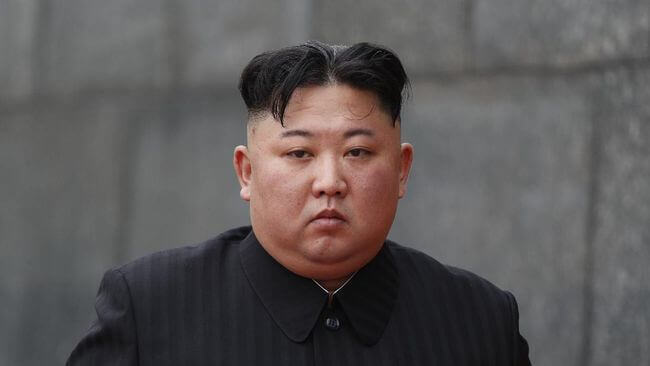North Korean Supreme Leader Kim Jong Un has a history of issuing provocative threats, utilising his country’s nuclear capabilities to assert dominance and garner attention on the global stage. His regime often employs aggressive rhetoric, threatening neighbouring countries and even the US with military action.
These threats are frequently accompanied by missile tests, heightening tensions in the Korean Peninsula.
Kim’s strategic use of threats serves both internal and external purposes, reinforcing his regime’s stability domestically and helping gain leverage in diplomatic negotiations. The international community thus closely monitors these developments due to the potential ramifications on regional and global security.
Notably, last month, Kim said that Washington’s policy of dealing with Pyongyang has now made war “inevitable.”
“Because of reckless moves by the enemies to invade us, it is a fait accompli that a war can break out at any time on the Korean Peninsula,” state mouthpiece the Korean Central News Agency (KCNA) reported the Supreme Leader as saying.
In addition, Kim has ordered the military to prepare to “pacify the entire territory of South Korea,” including with nuclear bombs, if necessary, in response to any attack.
Let’s have a look at recent events that could have triggered Kim’s sudden rise in threats.
1. US’ Joint Military Drills with South Korea
The US and South Korea conducted major air exercises in October, which involved 130 warplanes from both sides to simulate 24-hour wartime operations.
The annual drills, called Vigilant Defense, featured variants of the F-35 stealth fighter among other aircraft and aimed at improving interoperability between the two militaries.
With regard to the drill, the South Korean military said in a statement that it will “maintain the best combat readiness to immediately respond to and strongly punish any provocation by the enemy through an intense training simulating an actual situation.”
Such drills, that too done in tandem with powers that Pyongyang views as “hostile,” are sure to have irked Kim, who has urged the US to refrain from such provocations on several occassions.
2. US Warnings
In December, a joint statement by South Korea and the US warned in a dramatic statement that any nuclear attack against the South or its allies “is unacceptable and will result in the end of the (Kim Jong) Un regime.”
“The US side reiterated that any nuclear attack by [North Korea] against [South Korea] will be met with a swift, overwhelming, and decisive response,” the statement said.
The North’s lack of trust in the US and its policies is not helped along by such statements by the US.
North Korean leader Kim Jong Un said his military should “thoroughly annihilate” the United States and South Korea if provoked, state media reported Monday, after he vowed to boost national defense to cope with what he called an unprecedented U.S.-led confrontation. pic.twitter.com/3gYWKXsJtC
— The Associated Press (@AP) January 1, 2024
3. South Korea’s Warnings
South Korean President Yoon Suk Yeol further stoked the fire in his New Year’s address a few days ago.
Yoon said that Seoul and Washington will complete a strengthened defence posture in the first half of 2024, a further escalation of the allies’ response to North Korea’s growing arsenal.
Additionally, he claimed that the bolstered defence posture will “completely block” North Korea’s nuclear and missile threats, as the South will be able to achieve “a true and lasting peace based on strength.”
4. The South’s Increasing Support for Nuclear Weapons
A survey published by the Wilson Centre, a Washington D.C.-based think tank, in January 2023, found that more than 70% of the South Korean population would support developing their own nuclear weapons or the return of nuclear weapons to their country.
These findings come against the backdrop of the North conducting many missile tests, which have become increasingly advanced, with their pace of innovation spiking rapidly.
5. Ties with Russia
Some speculate that North Korea may also be trying to take advantage of the ongoing conflict in Ukraine to further its relationship with Russia — which is a permanent member of the UN Security Council, and thus wields considerable power in the international realm.
Anthony V. Rinna, a senior editor with the Sino-NK, a research group that analyses Northeast Asia, said in an opinion piece published in The Moscow Times last month that “Russia’s economic relationship with North Korea seems poised to rebound after years of sanctions and border closures.”
“This revitalized partnership has scope to expand into trading natural resources including metals and critical minerals, which have become increasingly weaponised in geopolitics,” he added.
Moreover, recent news of Russia using North Korea weapons in the Ukraine War points to the two countries’ growing closeness, which could be another driving factor behind Kim’s bold threats.
Conclusion
In sum, Kim Jong Un’s recent surge in threats appears multifaceted and driven by a confluence of factors.
The joint military drills conducted by Washington and Seoul, viewed as provocative by Pyongyang, likely escalated tensions.
Explicit warnings from both the US and South Korea, coupled with the latter’s commitment to strengthening its defence posture, have added pressure on North Korea.
The South’s increasing public support for nuclear weapons introduces a regional dynamic that further unsettles the status quo. Additionally, North Korea’s potential alignment with Russia amid the Ukraine conflict may be leveraging geopolitical opportunities.
Kim’s threats, while serving domestic stability and diplomatic leverage, underscore the complex interplay of regional geopolitics and North Korea’s quest for strategic advantage in a rapidly evolving global landscape. Monitoring these developments remains crucial for understanding and addressing the security implications in the Korean Peninsula and beyond.

